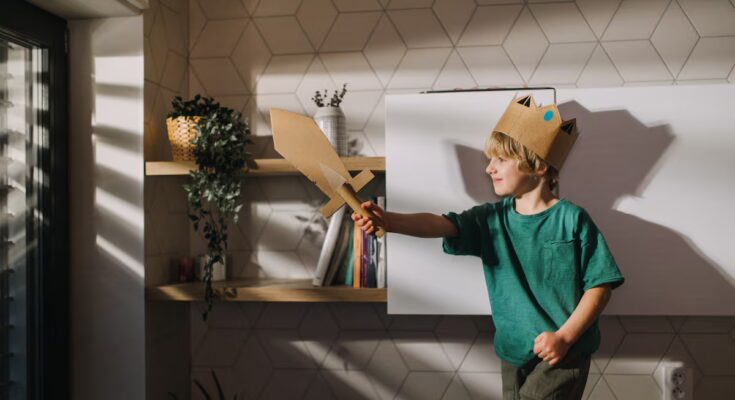In one of the moments of the children’s film In reverse), in which emotions and other psychological elements coexist in the mind of the protagonist, Riley Andersen, the viewer is introduced to the character of Bing Bong, her imaginary friend. This creation experienced its heyday during Riley’s very early childhood, but in the story it is presented as an almost forgotten memory that comes to life recalling his adventures with the girl. Like him, imaginary friends appear in the minds of the little ones above all to accompany them for a while and act as a possible emotional refuge.
But what exactly is an imaginary friend? “They are those figures created by the imagination of the minor. Symbolic thought appears at these early ages through an interaction in which you talk to them, play with them or include them in daily life. Around the age of six to eight, more or less”, defines them as educational psychologist Tania Ruiz. “They can be people, animals or living objects. They do not have to appear constantly. They can occur at specific times. It is not something pathological, but a manifestation of the child’s symbolic thinking,” he adds.
Among the reasons why this type of creations can appear in the minds of children for several months, the expert highlights above all their work of emotional management: “It is a resource that the child uses internally. It helps him to face fears or situations that he cannot manage, or insecurities. And this is a protective factor that he uses to face these situations.” Another reason for its appearance is much simpler. “The child might simply have more creativity,” says Carolina Torres, a health psychologist and director of the PsicoTorres center.
In the 2025 analysis Exploring cognitive and social differences in children with and without imaginary companionspublished in the Open Science Framework, a free and open source project management platform that facilitates collaboration and transparency in scientific research, concludes that having an imaginary friend produces neither benefits nor risks in children’s development. For its authors, this resource is part of normal growth and should not be a sign of maturity or alarm. On the other hand, another 2023 study prepared by Syracuse University (New York, USA), called Between imagination and reality: imaginary exploits in childhoodstates that the emotional function of these imaginary friends is to help children manage loneliness, fear or frustrations, and that almost half of children create one.
Why doesn’t everyone use the imaginary friend resource? “Because of life situations: the socioeconomic environment in which they live or more complex situations that they are not able to handle because they are very small and, therefore, they use it as an escape. There is also creative thinking, because some are more creative than others”, develops Ruiz.
But the figure of the imaginary friend can become a nightmare for both children and parents, turning against the emotional management of the little ones and can instill fears or negative feelings in them, or generate excessive dependence. “If there is a problem, it can be when the friend sends you a harmful message, or scares you, or appears in traumatic or abusive situations. There is a difference between the evolutionary, developmental imaginary friend, which is something normal, playful or safe; and the one that should worry us, which is the one that is scary, creates anguish, appears at night and can be due to some traumatic situation”, warns Torres. The psychologist lists the warning signs for parents to act: “We need to investigate what is happening in the child’s emotional world, in his family environment, if there have been sudden changes in the home, city or school, or even much more destructuring situations.” Ruiz, for his part, adds that it is important for parents to pay attention if their child also shows social isolation to focus exclusively on his imaginary friend.
As long as the resource of the imaginary friend lasts, parents need to be attentive to their child’s situation, at the same time validate their own emotions and look for the reason why they needed to create him in their imagination: “Usually there is something else going on: something at school, at home, a grieving process… Using that imaginary friend is normal in development, but sometimes not. We can use this creation as a therapeutic bridge and get information to work with,” warns Ruiz.
“The most normal thing is that it gradually disappears with the greater development of the child, because the social group already has much more weight, and they find that element of security in their peers. It is something progressive, we no longer talk so much about the imaginary friend but we talk about the real one”, explains Torres. What you should never do is tell your child that his imaginary friend doesn’t exist, he warns: “It can cause more confusion and stress. It should be given the place the child gives it, but if parents notice warning signs, or it extends beyond 10 years, it is advisable to consult a professional to see what may be happening.”


